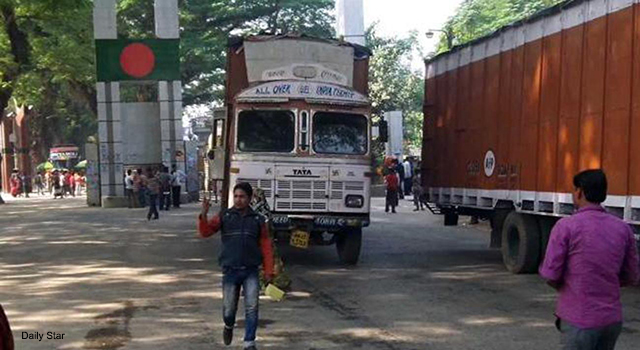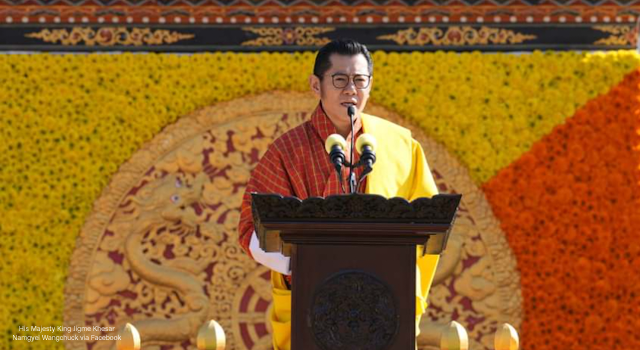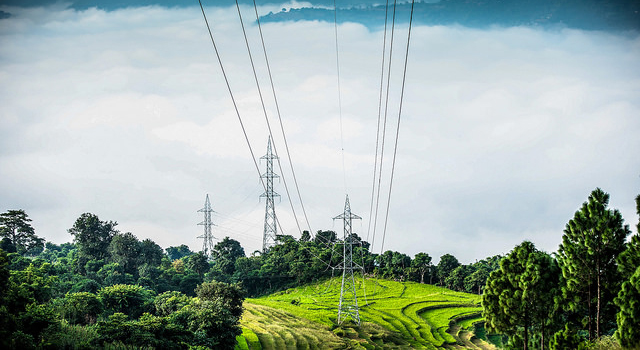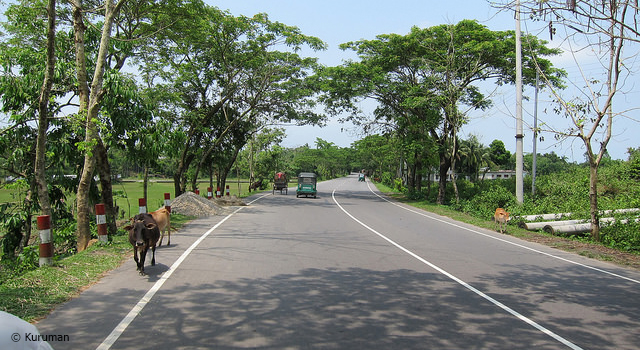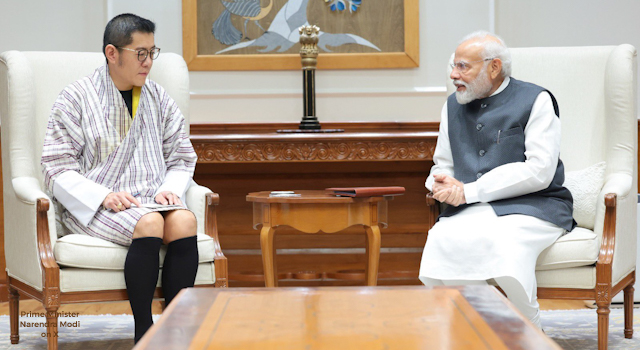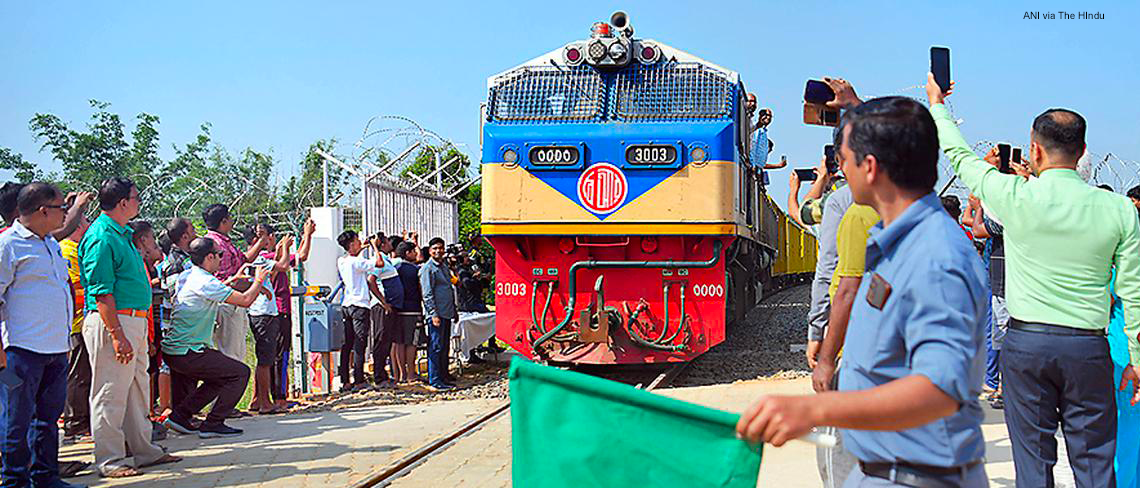
At the Haat of a Border
13 May 2017
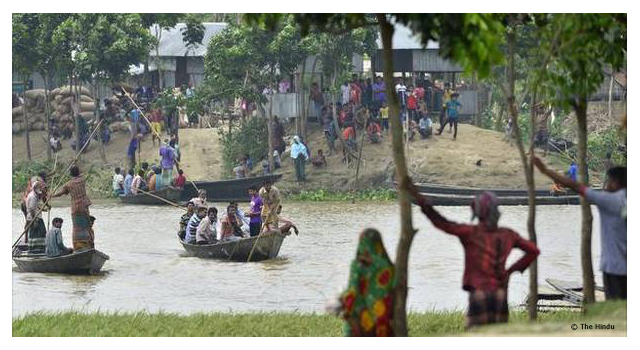
The border "haats" (rural markets) have become an additional means of livelihood for vendors from select border areas of Bangladesh and India. In the Kalaichar border haat alone, at least 300 families from India and about 500 families from Bangladesh supplement their incomes through the rural market. The haats have also allowed helped people from both countries to meet. In this feature, Mr. Shiv Sahay Singh, journalist for the Hindu, provides a closer look at the impact of the border haats to the lives of traders and consumers at the border.
This post originally appeared in the Hindu.
At the Haat of a Border
Shiv Sahay Singh
Everything from wood apple to cosmetics and plastic buckets are traded at border markets near Bangladesh
Along one of the curves of Gingiram river, which follows the contours of the India-Bangladesh border in Meghalaya, a small patch of nondescript land comes alive. It is Wednesday morning.
Beyond the barbed wire fence, heavily guarded by the Border Security Force (BSF) in Indian territory and by Border Guards Bangladesh (BGB) across the border, lies a collection of tin sheds with raised platforms, each supported by bamboo poles.
By 9.30 a.m., dozens of push carts make their way through kachcha mountain roads and queue up at this picturesque spot in South West Garo Hills district. Sacks full of betel nut, tamarind and vegetables come tumbling out from the Indian side of the border while Bangladeshi vendors bring in large plastic drums and containers, buckets, mugs and garments.
Inaugurated in July 2011, the Baliamari-Kalaichar border haat is one of the first markets set up between the two countries.
A memorandum of understanding between India and Bangladesh in 2010 says that such border haats aim at "promoting the well-being of people in remote areas across the borders" through a traditional system to market local produce. People who live within five kilometres of the border haat are given licences as vendors and buyers.
Suruzz Zamman, from Baliamari village in Bangladesh’s Kurigram district, is among the 25 vendors from across the border who comes to the haat every week. The 59-year-old is surrounded by plastic containers, folding tables and a variety of melamine ware. Most of his goods—worth ₹90,000—are sold within the first couple of hours.
"Before the market came about here, there were instances when people breached the fence and got shot at by the BSF. This market now keeps people away from cross-border crime and smuggling," Zamman says. Md. Fazrul Haque is from Kurigram. He has sold articles worth ₹10,000 today and is pleased with his profits today.
Commodities that originally had no value on this side of the border in South West Garo Hills have become sought after thanks to the border haat. Indian sellers say wood apple (bel), a natural forest produce from the hills, is popular with customers in Bangladesh, much like tamarind is. Farukh Mian, an Indian vendor, is making the most of the opportunity. The market has been nothing short of a blessing, he says. "A few years ago, I had no permanent source of income. Now I make a profit of ₹3,000 to ₹4,000 every week. I am able to send my five-year-son Ibrahim to an English-medium school." In a few hours, the resident of upper Kalaichar sells tamarind, cumin seeds and wood apple worth ₹14,300.
Sometimes transactions at the haat involve no cash, just barter. Traders contact each other over the phone and discuss what they are looking for. So sacks of betel nut and tamarind are exchanged for garments.
Kalaichar is one of four border haats along the India-Bangladesh border—the others are Kamalasagar and Srinagar in Tripura, and Balat in Meghalaya. Held once a week, trade in these markets happens in Indian rupees or Bangladesh taka or on a barter basis. According to government data, cash trade equivalent to ₹1,686.62 lakh took place at these four haats between 2010 and 2016. Six more border haats have been approved along the Indo-Bangladesh border, two in Tripura, at Palbasti and Kamalpur, and four in Meghalaya, at Bholaganj, Nalikata, Shibbari and Ryngku.
Not only is the Kalaichar market a means of livelihood for 25 vendors on either side, it is a boon for customers. On the Indian side of the border are 200 buyers and the number is higher in Bangladesh. Even for those driving carts and vans, the market has been a steady source of income at least once at week. Atabul Sheikh, a van driver, who was a daily wage worker earning between ₹200 and ₹250 a day, now earns ₹1,000 every Wednesday, he says.
However, only a handful of items can be sold at the haat, because of the restrictions imposed by the MoU between the two countries. But ask the vendors what they would like to sell and the list is endless. Bangladesh traders would like to sell dried fish and pulses while Indians wish that the restriction on garlic and ginger be lifted. But despite these restrictions, the Kalaichar border haat supports at least 300 families from India and about 500 families from Bangladesh.
Currency and camaraderie
But not everyone in the market is buying and selling. The border haat has also generated much curiosity among people on both sides. Amirul Islam, a police officer from Bangladesh, has travelled 60 km to come here. For a couple of hours, the police officer greets people at the haat, shaking hands and talking to vendors about everything from infrastructure to the quality of betel nut. But while he wants to buy something for his family, he has to give up the idea as the market is meant only for registered buyers and sellers.
It is also a natural meeting point for people from both countries; there’s a camaraderie between the BSF and BGB personnel. BSF company commander P.C. Yogi speaks to his counterpart Murshed from the BGB about where the next meeting of the market regulatory committees will take place. What better place than the market, they decide.
Two officers of State Bank of India from Tura, more than 50 km away, are busy exchanging currency notes. By the end of the day, they collect 1,58,700 Bangladeshi taka and hand over ₹1,04,742 to Indian traders. By 1.30 p.m., unsold ware returns to its place of origin on small boats across the narrow river.
In Sipahijala district, about 30 km southwest of Agartala in Tripura, another border market comes alive on Sundays. Here, the barbed wire fence separating the two countries is higher, possibly twice as high as the one on the South West Garo Hills border.
Cosmetics from India are in great demand at this market while dried fish, locally baked goods, plasticware and garments from Bangladesh draw Indian customers. People have lined up at the gate to collect their visitor passes. The officials check photo identification documents and for a fee of ₹20, the visitor is handed a yellow slip. On an average, about 700 visitors from India and a similar number from Bangladesh visit the market every week.
Tazmul Islam and Shamshul Nahar have arrived in a group of 50 from Narsingdi district in Bangladesh. Nahar has bought polythene bags full of fairness creams, shampoos, face wash and soap. “We do not get cosmetics of such quality in Bangladesh,” she says.
But for Mary, Dipta, Manju and Mousumi, all members of a family from Agartala, the visit to the haat is not about buying cosmetics, but just a Sunday morning outing. They go stall to stall, clicking photographs, before heading to their next destination, a temple a few hundred metres away.
Haats mean different things to different people. For Biswajit Das, who lives in Brahmanbaria, a district along the border fence in Bangladesh, the market is his means of livelihood. He introduces customers to different varieties of dried fish—hilsa, tangra and local dried fish, puti—and stresses the need to allow sale of fresh fish in the market. “It would really help us make better profits.”
Like Das, every vendor has a ready wishlist for the market. Jumman Aziz Ema believes that a separate ladies corner should be built for women buyers and sellers.
Occasionally, we encounter people who have slipped past the border guard and barbed wire. They come in to sell pickle and cucumber and are visibly frightened when asked about their identity cards.
Nepal Debnath, who works at a restaurant in Brahmanbaria, and his friend Tasli Ahmed meet a few young men from India and they exchange numbers. "Can I come and visit India? I want to see the temple. I promise to take you to Bangladesh," Debnath tells his new friends. However, they soon give up the idea. It is 2.20 p.m., and the last train is about to leave Kasba Railway station for Brahmanbaria.
From the border haat, Debnath and Ahmed can see the train on the other side of the fence. They hear the whistle and rush towards the station. The crowd at the market has started thinning. In another hour, the traders will collect their unsold wares and return to the custom offices on either side of the border. The gates of the market close and the border guards return to base. Until next Sunday.



